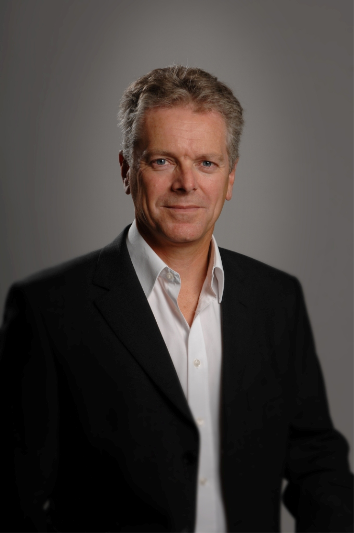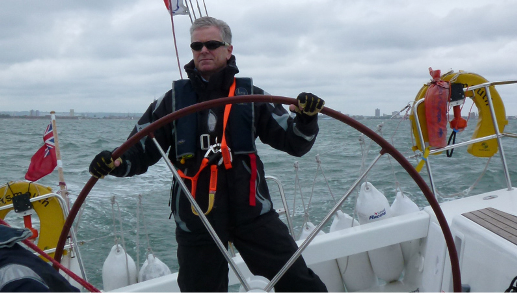Two Welshmen meet on St David’s Day. Unsurprisingly, there is a pub involved. Ted Nield talks to the incoming Executive Secretary, who begins work this month.
 “Welsh, yes, and proud of it – born in Wrexham, brought up between there and Llangollen, where my father was a baker. We had a summer cottage in north-west Wales – Tremadoc – so I spent my formative years in two classic areas of British geology, and it left an indelible mark, I think.
“Welsh, yes, and proud of it – born in Wrexham, brought up between there and Llangollen, where my father was a baker. We had a summer cottage in north-west Wales – Tremadoc – so I spent my formative years in two classic areas of British geology, and it left an indelible mark, I think.
“Then at 16, my mother dragged me along to a careers adviser, who asked: ‘So, what do you like, young lad?’. I answered ‘Geology’. And he said: ‘Well you can forget that because you’ll never get a job in it!’
“So I duly took his advice and didn’t study geology at A level; but, when I went to Cardiff (to do Chemistry and Zoology), there was an opportunity to take the subject I had always been most interested in. I decided geology was for me, and did that instead.”
This was the moment, about 35 years ago, when Richard Hughes and I first met, in a Friday afternoon palaeontology practical, at which I was demonstrating. I had finished by the time he graduated, however. So, what happened next?
“Well, after graduation, I had a few offers of PhD projects: one in Cardiff with Bill Dean and another with Derek Ager in Swansea. But there was one from Barrie Rickards at Cambridge, which promised a mix of mapping and structure in Upper Ordovician rocks in Wales, palaeontology, biostratigraphy and with interesting implications for Scotland, Scandinavia and Canada. It was a sort of 'multidisciplinary' PhD - the sort that probably don't get funded these days!
BGS
“So I completed that within the three years – I was eager to get a proper job! - and was duly offered one with BGS where I stayed for well over 20 years. One of the great things about a big organisation like BGS is that, as long as you are flexible, interested in different things and are prepared to move around, there are many opportunities. So, within that time I had 5 or 6 different roles; though I started off as one of that endangered species, a mapping geologist - working in an area of North West England that basically hadn't been mapped properly, if at all, since the 1840s.
“I did that out of Keyworth, and then relocated to the regional office in Newcastle upon Tyne (to work on coalfield geology, but I also found myself involved with BGS's Lake District Lower Palaeozoic Project for a couple of years). This was the time when NIREX was investing heavily in the idea of a waste repository at Sellafield, and I had quite a bit to do with that - which gave me experience of a much more applied form of geology.
“I had always been interested in international work too, and I soon had the chance to work abroad, too - in Ecuador. My wife and I – she’s a PhD physicist... we met in Cambridge - spent about two years in Ecuador with our son; but my involvement lasted over five years. Our second child - a daughter - was born there. I loved the scale of it – essentially, a World Bank-Funded project to map the Western Cordillera of the Andes, from Peru to Columbia, in a four or five-year period. It was a pretty epic challenge, with all sorts of – unexpectedness: such as, a complete lack of topographic base maps, and no satellite or aerial photo images! Luckily, GPS was just coming on stream; and, as exploration geologists do, we improvised.
“The project was all about bringing inward investment to Ecuador’s minerals industry. To the North, there’s Colombia - dripping with minerals; to the south, Peru and Chile, with world-class deposits of copper, gold and other precious metals. So, the thinking was – ‘where are they in Ecuador?’ The Ecuadorian government took a World Bank loan, and with some ODA money, engaged BGS to find out.
“It was life-changing. It wasn't just interesting geologically; it was culturally fascinating. We took the opportunity to travel widely. It was here that I learned Spanish. It became a big chunk of my life - I was still writing papers on it 10 years later. The area was all but unknown – a very different situation from the Lake District, where you pretty soon realise you are treading in the footsteps of generations of geologists before you! In the New World, even today, you are often the first. The geological opportunities are just terrific.
Midland Valley
“Back in the UK, I relocated to BGS Edinburgh and took on a big project in the Midland Valley. Then an opportunity arose on the commercial side - bringing income into the Survey. So I got involved in international business development, first in Europe and then South America and Africa, for five or six years. This was great commercial experience (we won significant amounts from the World Bank, Regional Development banks, DfID and so on) as well as a chance to explore some pretty interesting parts of Africa.
“Also, I took BGS through a major review (the 2003 Science & Management Audit), which it came out of pretty well. I guess that did my stock no harm. It was certainly a major learning experience, and my real first involvement with NERC, the government and the directorate - the politics of UK science. Then in 2006 I moved into ‘matters digital’ at BGS, as Director of Information.
“It might sound dull, but looking back, I think two of the achievements I am most proud of are BGS’s ‘I-Geology’ app, and the ‘OpenGeoscience’ website, both of which happened at this time, and which were my idea. This was also the time (mid to late noughties) that I chaired the Information Management Committee at the Society - four years - shortly after standing for, and being elected to, Council. This wasn't a thing that had occurred to me previously, despite being a Chartered Fellow and all that; but, you know how it is - you get a call out of the blue from Edmund Nickless, and the next thing you know... The remit included the Library, so I also found myself (rather reluctantly!) embroiled in the 2011 Library Review. I suppose I had some relevant experience here from BGS, because I had been involved with the restructuring of Library provision there.
Coal Authority
 “Being Director of Information was my last role at the Survey - I resigned in 2013 and moved to the Coal Authority as Director of Business Development. BGS is a fantastic organization and I had a wonderful career there; but I felt I had probably taken it as far as I could. I often describe working at the Coal Authority as being like doing an on-the-job MBA - it's a business, run very much along commercial lines, within a strict governance framework. I have learned a huge amount about corporate governance, while helping to sort out the legacy of 300 years of UK mining.
“Being Director of Information was my last role at the Survey - I resigned in 2013 and moved to the Coal Authority as Director of Business Development. BGS is a fantastic organization and I had a wonderful career there; but I felt I had probably taken it as far as I could. I often describe working at the Coal Authority as being like doing an on-the-job MBA - it's a business, run very much along commercial lines, within a strict governance framework. I have learned a huge amount about corporate governance, while helping to sort out the legacy of 300 years of UK mining.
“One of the things that attracted me to the job was the fact that the Authority had clear strategy to make itself less dependent on grant-in-aid from Government and - as an arm's-length body – to become financially self-sufficient and commercially successful. My knowledge and track record in exploiting the commercial value of BGS's knowledge-base probably helped us go from zero to almost £2m of commercial income a year now.”
With wife Catherine still teaching part-time, a son in the third year of a four-year Physics degree in Durham and a daughter in the second year of a Natural Sciences degree in Cambridge, there are no plans for the family to decamp en masse to London.
“We’re now quite settled in the East Midlands. If I have any roots, other than Welsh ones, they are here. So I expect I’ll take a pied à terre somewhere, and travel up for the week” Richard says, as we move on to talk about his new role in Burlington House.
“My work [at the Coal Authority] is of direct relevance to the Society, which needs to take a long, hard view of its finances. That observation is nothing new - it's up in lights in the existing financial strategy. Rather than being a ‘three-legged stool’, supported equally by publishing, membership and sponsorship, the Society’s finance has become more of a two-legged stool - a pretty unstable item of furniture! We’ve become over-reliant on membership and publishing and need to develop our alternative income. I think my skills and experience in bringing money into not-for-profit organisations is particularly relevant.
“How successful the Society can be in attracting those income streams, I don't yet know. You can't create a market where none exists. But we have to be serious about it. There has been, I think, a tendency for committees to sit, deliberate, and come out with good strategic plans - but which lack the necessary underpinnings. What are those potential new income streams? How much might we need to invest in order to make them a reality? What would be the likely return on that investment? I have seen this before – and we will need to address it.
Ambitious
“We could just cut our operation to suit our cloth, and hope that things get better; but I am much more ambitious for the Society than that. The Society does fantastic work - the content, for example, on the website. Geoscientist is brilliant, and the output of the Publishing House is world class. I would like to put the Society in a place where it can do a lot more of these great things.
“But the Society is still too London-centric. The geoscience community is fragmented into specialist and regional groups which seem to operate in isolation. I want to reach out to them, so that they can feel more as though they want to be part of a greater whole. And of course, we need to communicate, more effectively than we do, the benefits of geoscience research to life in general. But that is always true – a sliding scale, with no top! I am really looking forward to playing my part.”
Further reading
Read Richard’s 2016 Geoscientist feature article Life after Coal (written with Steven Kershaw).
Save
Save